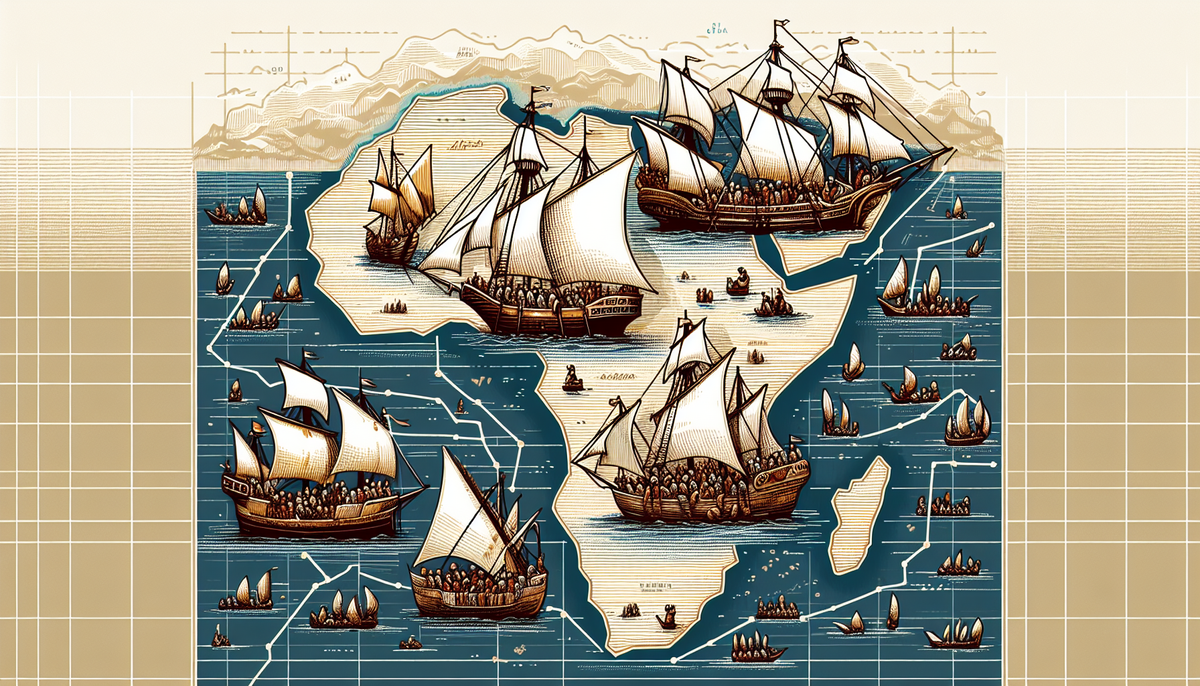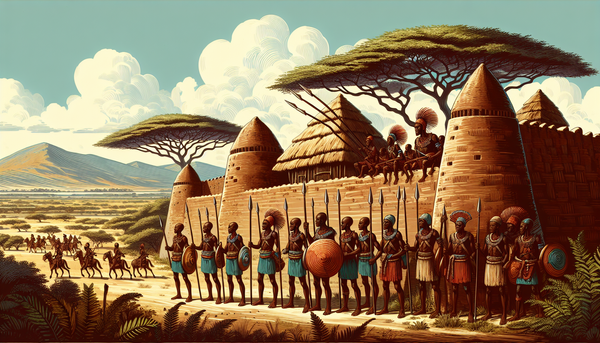The History of African Maritime Trade Routes

Origins of Maritime Commerce in Ancient Africa
The origins of maritime commerce in ancient Africa can be traced back to the early civilizations along the continent's coastlines. As far back as 3000 BCE, Egypt engaged in trade across the Mediterranean with neighboring regions, establishing trade routes that facilitated the exchange of goods like papyrus, gold, and linen. Similarly, communities along the Red Sea began connecting with Arabian and Indian merchants, exchanging textiles, spices, and other valuable commodities.
In East Africa, the development of maritime trade significantly accelerated due to the growth of city-states along the Swahili Coast. These coastal towns, such as Kilwa and Mombasa, became crucial hubs for trade between Africa and the Indian Ocean world, flourishing from the influx of goods from Asia, the Middle East, and beyond. The influence of Arab traders was particularly pronounced, leading to the spread of Islam and the establishment of vibrant cultural exchanges.
West Africa also had its maritime roots, with ports along the Atlantic coast facilitating trade in substances like ivory and gold. These early maritime activities set the stage for a complex web of trade networks that would shape Africa’s economic landscape for centuries, highlighting the continent’s significant role in global trade long before the rise of European colonial powers.
Development of Trade Networks Across the Indian Ocean
The Indian Ocean has long been a vital conduit for trade, connecting diverse cultures and economies across Africa, Asia, and the Middle East. By the first millennium CE, a sophisticated network of maritime routes began to emerge, primarily driven by the demand for goods such as spices, textiles, and precious metals. East African ports, such as Mogadishu and Kilwa, flourished as key entry points for merchants from Arabia and India, who sought African gold, ivory, and slaves.
The establishment of these trade networks was facilitated by the monsoon winds, allowing sailors to navigate effectively between Africa and the Indian subcontinent. This predictable seasonal pattern encouraged regular trading voyages, fostering relationships among diverse communities. The exchange of knowledge, technology, and religion invariably accompanied trade, leading to the spread of Islam along the Swahili Coast and integrating local populations into the broader Islamic world.
Prominent trading cities flourished as cosmopolitan hubs, where different cultures intersected and mingled. The wealth generated from maritime commerce allowed for the development of sophisticated urban centers, which became centers of culture, scholarship, and diplomacy. This dynamic trade network contributed significantly to shaping the socio-economic landscapes of involved regions, leaving lasting impacts that resonate to this day.
Influence of Mediterranean Civilizations on Northern African Routes
The Mediterranean civilizations played a critical role in shaping the trade routes of Northern Africa, particularly during the ancient and medieval periods. As powerful empires like the Phoenicians, Greeks, and Romans expanded their reach, they established extensive trade networks that connected Europe, North Africa, and the Near East. These interactions facilitated the exchange of goods, ideas, and cultures, significantly influencing the development of trade in the region.
The Phoenicians, known for their maritime prowess, established trading posts along the North African coast, including modern-day Tunisia and Algeria. Their extensive navigation skills and use of advanced shipbuilding techniques opened up new possibilities for commerce, encouraging local populations to engage in maritime trade. Following the Phoenicians, the Greeks and Romans further developed these routes, introducing products such as olive oil, wine, and ceramics to North Africa.
Roman occupation brought infrastructural improvements, including roads and ports, which enhanced connectivity between regions. This allowed for the efficient movement of goods like grain, textiles, and luxury items. Moreover, cultural exchanges fostered by these interactions contributed to the rich tapestry of Northern African societies, creating a melting pot of traditions that would influence trade practices for centuries to come.
Role of the Swahili Coast in East African Trade Dynamics
The Swahili Coast, stretching along the eastern shoreline of Africa from modern-day Somalia to Mozambique, has been a focal point of maritime trade for centuries. This vibrant region, characterized by its unique blend of African, Arab, and Persian influences, emerged as a crucial hub for commerce between the Indian Ocean and the African interior. By the 1st millennium CE, city-states such as Zanzibar, Lamu, and Kilwa flourished, serving as commercial gateways for transoceanic trade.
The strategic position of the Swahili Coast made it an attractive destination for traders from the Arabian Peninsula, India, and beyond, eager to exchange goods like gold, ivory, spices, and textiles. The prosperous trade in luxury items not only boosted local economies but also led to the development of sophisticated urban centers enriched with diverse cultures and languages. Swahili, a Bantu language infused with Arabic vocabulary, exemplified this cultural blending.
Engagement in Indian Ocean trade networks facilitated the spread of Islam, significantly impacting social and political structures in the region. By fostering relationships among distant cultures, the Swahili Coast played a vital role in enhancing East African trade dynamics, shaping its economic landscape, and establishing it as a significant player in global maritime commerce.
Impacts of European Colonialism on Traditional Maritime Paths
The advent of European colonialism in the late 15th century marked a profound shift in traditional maritime trade paths across Africa. European powers, driven by the desire for new resources and markets, sought to control established trade routes that had flourished for centuries. The Portuguese, British, French, and Dutch, among others, established coastal colonies and trading posts, disrupting existing systems of trade and commerce that had long been dominated by local and regional actors.
Colonial powers often imposed new regulations and monopolies, leading to the decline of indigenous trading networks. For instance, European traders prioritized the export of cash crops such as sugar and cotton, reshaping local economies and the types of goods exchanged. The focus on exploitative practices, including the transatlantic slave trade, devastated communities and disrupted traditional livelihoods.
Moreover, European colonial influence introduced advanced navigation techniques and shipbuilding technologies, which, while providing a new means of maritime transport, shifted the power dynamics in trade. Many local economies became reliant on exporting raw materials to Europe, leading to underdevelopment and economic dependency. Ultimately, the impacts of colonialism precipitated long-lasting changes in maritime trade patterns, consequences that reverberate in Africa’s trade dynamics to this day.
Technological Advancements and Navigation Techniques
Technological advancements and navigation techniques have played a pivotal role in the evolution of maritime trade throughout history. Early seafarers relied on basic tools such as sun compasses and stars for navigation, but as trade networks expanded, so did the need for more sophisticated methods. The development of the astrolabe and later the sextant allowed navigators to determine their latitude more accurately, enhancing confidence in open-water voyages.
The invention of the magnetic compass in the first millennium CE facilitated navigation even in cloudy or stormy conditions, enabling sailors to venture further from shore. Improvements in ship design, such as the introduction of the caravel, which combined lateen sails with a deep hull, gave vessels greater speed and maneuverability. This allowed for exploration of previously inaccessible waters and supported the growth of long-distance trade routes.
In the 16th century, the Portuguese and Spanish navigators further advanced maritime technology by implementing systematic cartography, producing detailed maps that guided voyages across the Atlantic and Indian Oceans. These innovations not only transformed trade dynamics but also fueled European exploration and colonial expansion, connecting global markets and reshaping economic landscapes. As a result, the interplay of technology and navigation techniques has continually influenced maritime commerce, adapting to the changing needs of societies engaged in trade.
Modern Revitalization and Economic Strategies in African Maritime Commerce
In recent years, African nations have recognized the significance of revitalizing maritime commerce as a key driver of economic development. With over 30 coastal countries and a wealth of natural resources, enhancing maritime commerce presents numerous opportunities for growth. Governments and regional organizations are prioritizing investment in port infrastructure, modernizing facilities to accommodate larger vessels and facilitate efficient cargo handling. This not only improves trade competitiveness but also attracts foreign direct investment.
Additionally, countries along the African coast are increasingly focusing on sustainable maritime practices. Initiatives to combat illegal fishing and promote conservation of marine resources are gaining traction, ensuring long-term viability of fisheries and associated industries. The African Union’s Agenda 2063 emphasizes the Blue Economy as a pathway to sustainable development, encouraging member states to harness the potential of their marine environments.
Collaboration among nations is crucial for effective maritime governance. The African Continental Free Trade Area (AfCFTA) aims to facilitate the intercontinental flow of goods, reduce tariffs, and promote intra-African trade, further enhancing maritime commerce. By embracing innovation and addressing challenges, African countries are poised to strategically position themselves in the global maritime economy, making significant contributions to regional economic growth and development.



